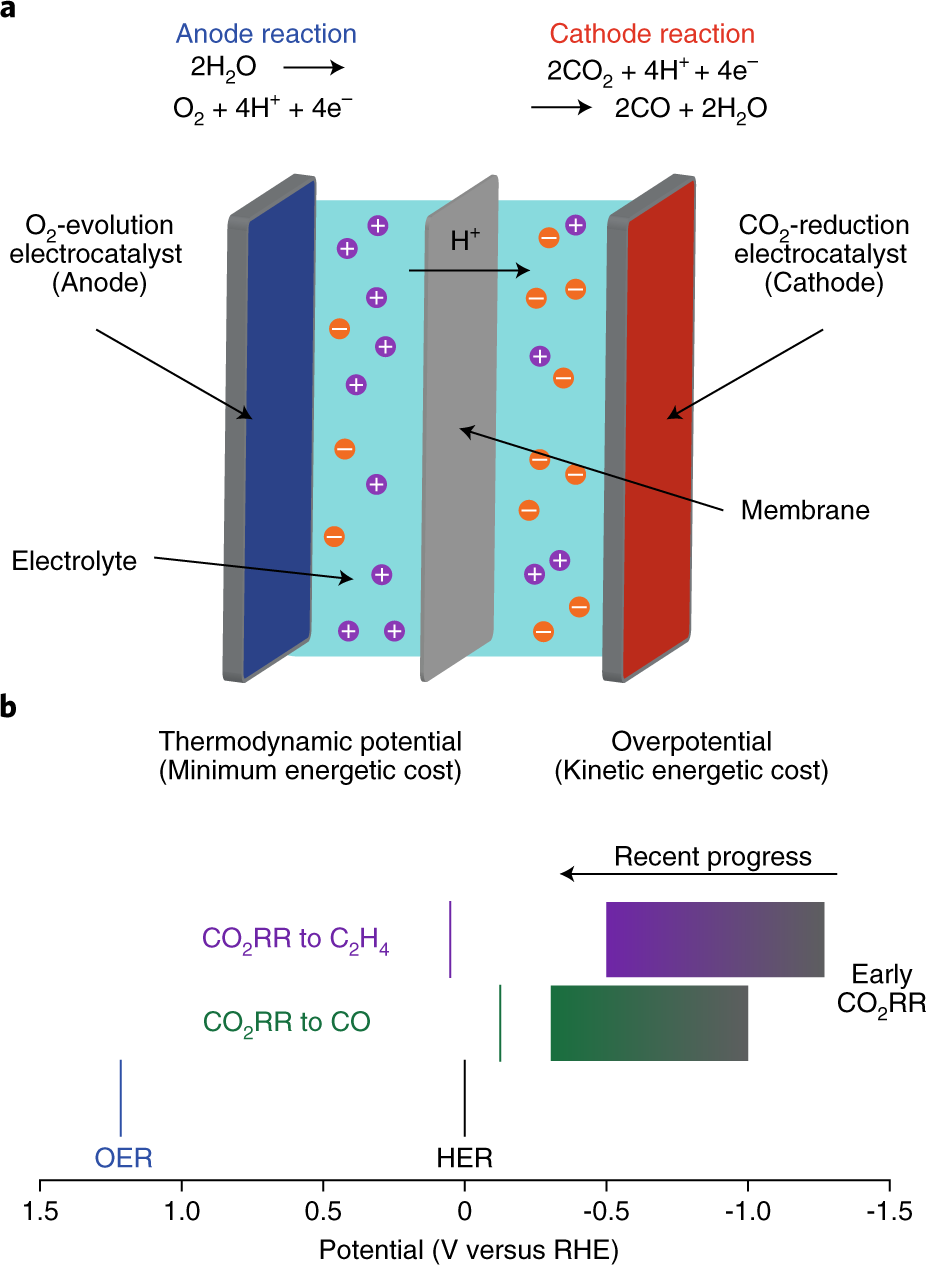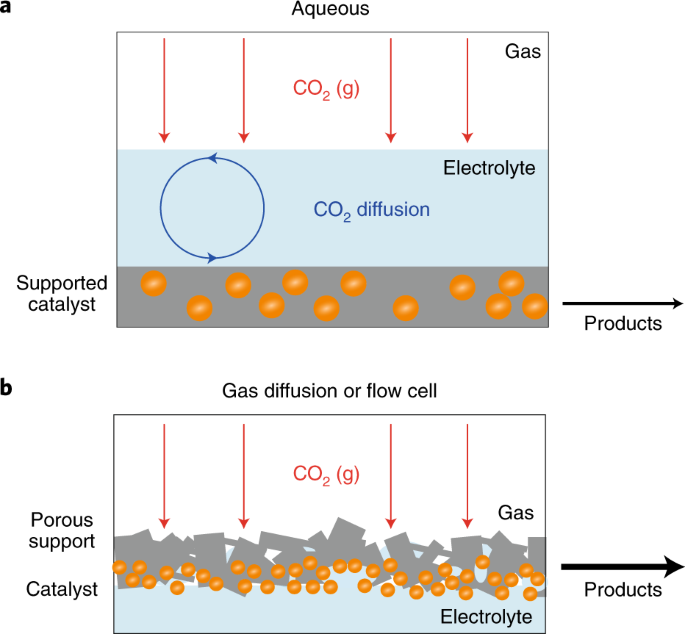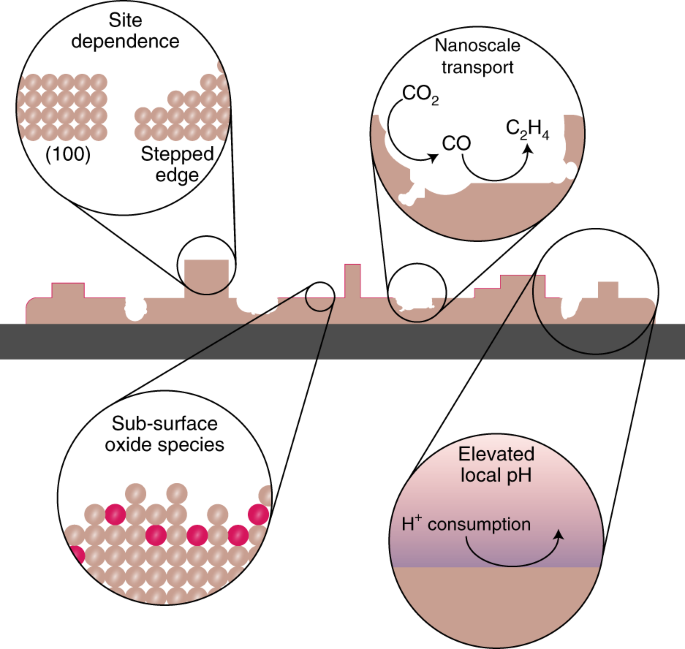Electrochemical carbon dioxide recycling provides an attractive approach to synthesizing fuels and chemical feedstocks using renewable energy. Eochemical carbon dioxide recycling ElectrochemicalCO 2-recyclingECRsystemsFig1aincludea cathodeananodeaCO 2-containingelectrolyteandamembrane.

Designing Materials For Electrochemical Carbon Dioxide Recycling Nature Catalysis
Alongside the CO 2 activation and reduction process the reduction of bound.

. Electrochemical methods have also proven valuable in the recycling of carbon dioxide a waste gas with deleterious environmental effects. Designing Materials for Electrochemical Carbon Dioxide Recycling Michael Ross Phil De Luna Yifan Li Cao-Thang Dinh Dohyung Kim Peidong Yang and Edward Sargent. Dioxide Materials offers an electrochemical route for the conversion of CO 2 a waste feedstock to CO or formic acid thereby creating value from waste and reducing greenhouse gas GHG emissions.
This capability could further decouple CO 2 emissions from economic growth in addition to aiding the mitigation of rising global CO 2 emissions. Recycling is published in Nature Catalysis. A CO 2 recycling plant for substantiation of our idea has been built on the roof of the Institute for Materials Research in 1996.
Electrocatalytic surface and near-surface engineering ESE has great potential to advance CO 2 reduction reactions CO 2. Although a wide variety of materials have been studied for electrochemical reduction of CO 2 the selective and efficient reduction of CO 2 is still not accomplished. Electrochemical CO 2 conversion offers an attractive route for recycling CO 2 with economic and environmental benefits while the catalytic materials and electrode structures still require further improvements for scale-up application.
ThecathodeistheelectrocatalystthatimplementstheCO 2 reduc-tionreactionCO 2 RRTheanodeprovidesasiteforoxidation. Request PDF Designing Electrode Materials for the Electrochemical Reduction of Carbon Dioxide Electrochemical reduction of carbon dioxide is a. And De Luna Phil and Li Yifan and Dinh Cao-Thang and Kim Dohyung and Yang Peidong and Sargent Edward H abstractNote Electrochemical carbon dioxide recycling provides an attractive approach to synthesizing fuels and chemical.
All of them have been tailored by us. Electrochemical reduction of carbon dioxide is a viable alternative for reducing fossil fuel consumption and reducing atmospheric CO 2 levels. Designing efficient and robust electrocatalysts that benefit from the structure-activity relationship has been the focus to promote CO 2 conversion.
Complex reaction mechanisms and the competing hydrogen. Mike Phil Yifang Cao and Dohyun published a review Designing materials for electrochemical carbon dioxide recycling in Nature Catalysis. 2 8 At present modern society relies on coal natural gas and oil to synthesize the fuels and chemicals that.
Articleosti_1601205 title Designing materials for electrochemical carbon dioxide recycling author Ross Michael B. Designing materials for electrochemical carbon dioxide r ecycling Michael B. Our vision is to recycle CO 2 back to fuels using renewable energy as an input.
Ross 12 Phil De Luna 23 Yifan Li 14 Cao-Thang Dinh 25 Dohyung Kim 6. Because electrocatalysis occurs at solidliquid and solidliquidgaseous. A Review article by Mike Ross et al titled Designing Materials for Electrochemical Carbon Dioxide.
Nature Catalysis 2 648658 2019. 6 In these processes CO 2 is electrochemically converted to useful value-added materials such as hydrocarbons 7 and. Integrating catalytic design with mechanistic understanding yields scientific insights and progresses the technology towards.
On the path to deploying this technology basic and applied scientific hurdles remain. Recycling carbon dioxide into fuels and chemicals remains a grand challenge of science and engineering. Electrochemical carbon dioxide recycling provides an attractive approach to synthesizing fuels and chemical feedstocks using renewable energy.
Interfacial interactions at the surface. Key materials necessary for the global CO 2 recycling are the anode and cathode for seawater electrolysis and the catalyst for CO 2 conversion. Integrating catalytic design with mechanistic understanding yields scientific insights and progresses the technology towards.
In this review various metal-based materials are first classified and discussed in terms of their structural. Co-feeding copper catalysts couple carbon Yifan Li and Peidong Yang. If we are successful we can change the world by promoting energy security and independence.
Designing materials for electrochemical carbon dioxide recycling Competition with dihydrogen evolution. Copyright Clearance Center is your one stop shopping for digital rights. Designing Materials for Electrochemical Carbon Dioxide Recycling.
As discussed below certain critical raw materials successfully undergo industrial-scale electrochemical recycling. On the path to deploying this technology basic and applied scientific hurdles remain.

Designing Materials For Electrochemical Carbon Dioxide Recycling Nature Catalysis

Designing Materials For Electrochemical Carbon Dioxide Recycling Nature Catalysis

Designing Materials For Electrochemical Carbon Dioxide Recycling Nature Catalysis

Pdf Designing Materials For Electrochemical Carbon Dioxide Recycling
Designing Materials For Electrochemical Carbon Dioxide Recycling Peidong Yang Group

Designing Materials For Electrochemical Carbon Dioxide Recycling Nature Catalysis

Electrolytic Cell Design For Electrochemical Co2 Reduction Sciencedirect

Designing Materials For Electrochemical Carbon Dioxide Recycling Nature Catalysis
0 comments
Post a Comment